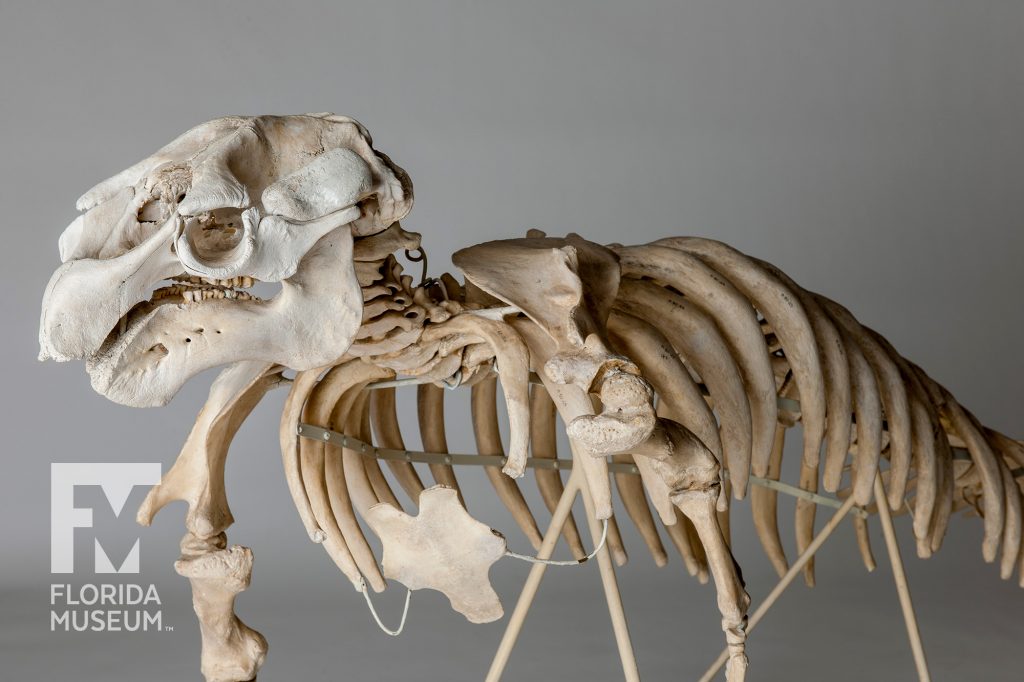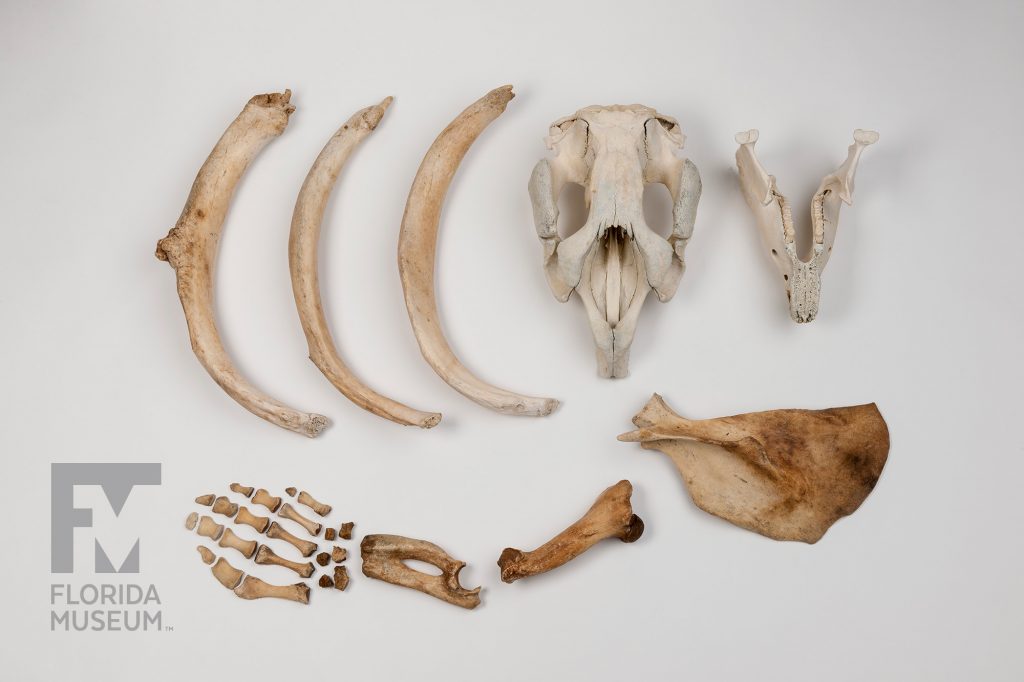Since 1974, over 1700 manatee deaths have been caused by watercraft collisions, which leave recognizable scars. Florida Manatee populations seem to be recovering well, in large part to boating restrictions in rivers and springs such as no wake zones to protect manatees from harm.
Summary
Florida Manatee Ribs (Trichechus manatus latirostris)
From Glades Co., Florida, Oct. 1981
State Marine Mammal
Collection
Story
No one in Florida really needs an introduction to the Florida Manatee. They are native to the state and, along with the Florida Panther, are an iconic mammal for Florida. The Florida Manatee we all know and love is a subspecies of the West Indian Manatee. West Indian Manatees are found throughout the Caribbean islands, Central America, and down to northern and South America. The Florida Manatee can be found in our state’s coastal waters, springs and rivers, but are also known to travel along the eastern coastline as far up as Massachusetts. In the Gulf of Mexico, they can be found west to coastal Louisiana and sometimes as far as Texas.
A cool fact about manatees is that they don’t have tooth replacement like you and I do. Instead of having baby teeth that fall out and get replaced with permanent teeth, manatees have what’s called “rolling dentition” or “marching molars” where new teeth are formed in the back of the jaw and move forward as old molars wear down and fall out. This is an adaptation to help them cope with eating the abrasive plants that they love; and those plants often get mixed in with sand, which can wear down the teeth very quickly. Elephants also have the same tooth replacement pattern, although elephants only have a limited number of molars whereas manatees have a never-ending supply.
Manatees are a federally protected endangered species and have been on the endangered species list since 1973. Back in 1991, there were estimated to be only a little over 1,200 manatees in the state of Florida. Today, there are estimated to be over 6,300 individuals. The main threat to manatees used to be collisions with boats and habitat loss, but manatee protection zones that reduce speed and/or restricted operation of water vessels, as well as restrictions on waterfront development, played a huge part in helping the species rebound.
Now many groups would like to see the manatee removed from the endangered species list and have petitioned the U.S. Fish and Wildlife Service to consider delisting. In early 2016, the U.S. Fish and Wildlife Service officially proposed delisting the manatee and moving it from the endangered list to the threatened list. However, no decisions have been made as of December 2016 as to whether the agency will follow up on that recommendation.
Even though their numbers are up, they’re still vulnerable to prolonged cold snaps and algal blooms, which have caused their numbers to crash in the past. And the removal of manatees from endangered species protection could ease or remove the protections that helped restore their numbers in the first place. This could cause manatee populations to suffer again as they once did. So more research is definitely needed no matter what the final decision is regarding the manatee’s future protection status in the state.
Verity Mathis
Collection Manager, Mammals*
Florida Museum of Natural History
Additional Information
- The Florida manatee is Florida’s State Marine Mammal.
Exhibit
On display Sept. 23, 2017-Jan. 7, 2018, Rare, Beautiful & Fascinating: 100 Years @FloridaMuseum celebrated the Museum’s rich history. Each Museum collection was asked to contribute its most interesting items and share the stories that make them special. Though the physical exhibit is closed, this companion website remains online, providing an opportunity to experience the Florida Museum’s most treasured specimens.
Exhibit Area: On the Brink
Theme: Success Story
 Want to see more? Explore more than 300 breathtaking color photos of plants, animals, fossils and cultural heritage materials from the Florida Museum of Natural History’s collections in the award-winning book All Things Beautiful available from the University Press of Florida.
Want to see more? Explore more than 300 breathtaking color photos of plants, animals, fossils and cultural heritage materials from the Florida Museum of Natural History’s collections in the award-winning book All Things Beautiful available from the University Press of Florida.
*This title was accurate at the time the exhibit was on display in 2017. Please visit the collection website to verify current staff and student information.

